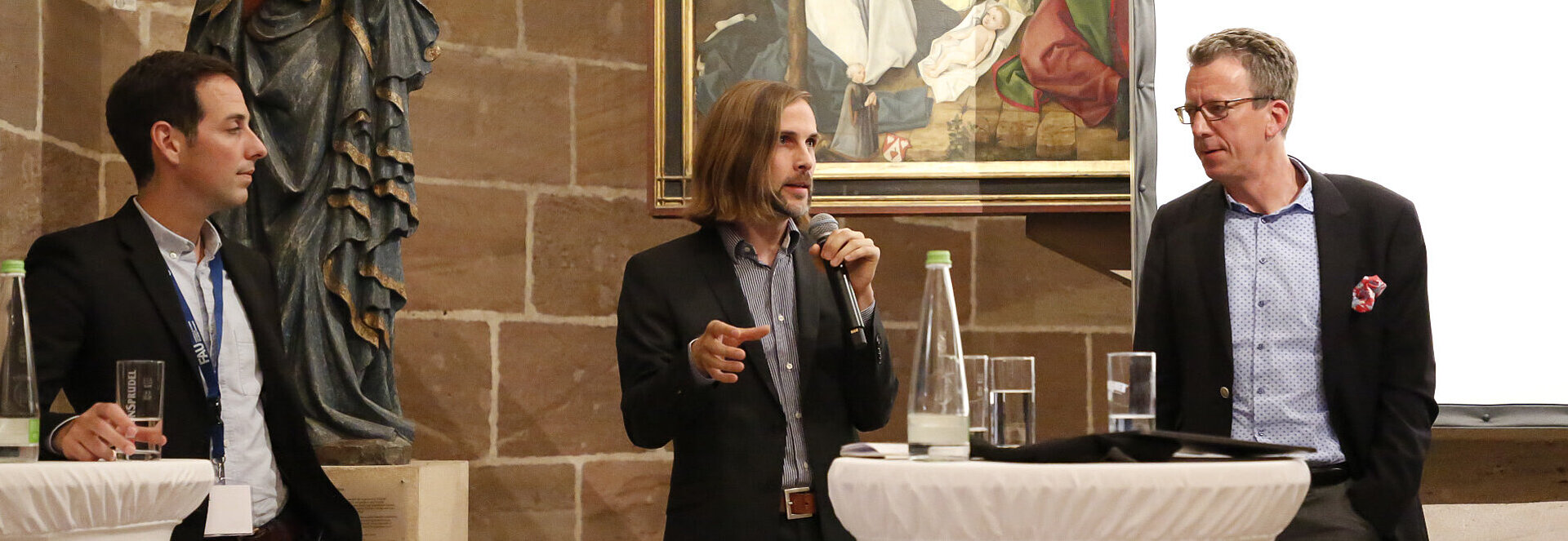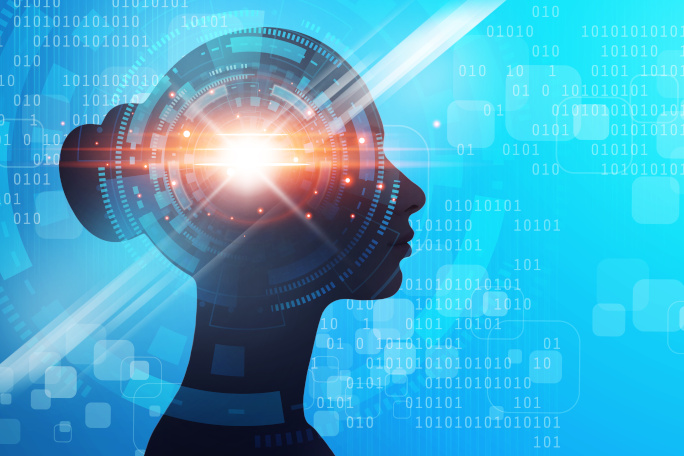The Digital Art Historian
Most of us don’t question the significance of—let alone notice—the iconographies all around us. In contrast, Peter Bell questions everything. On a given morning, he could be discussing the motifs on ancient coins in archives around the world. In the afternoon, it might be the gestures of the Angel in the Annunciation in a previously unknown art collection that have captured his attention. Later, he might, in his capacity as Germany’s Ambassador on the European Time Machine project, join a call about 4D reconstructions of historic cities, or about the bias in computer-vision training sets.
In Conversation with the Computer
These seemingly unrelated questions are all linked by the topic of machine vision and visual studies: Bell’s particular area of expertise. Bell is a junior professor of Digital Humanities with a focus on Art History at Friedrich-Alexander-Universität Erlangen-Nürnberg (FAU). With the help of computers, he recognizes, compares, and analyzes the iconographies in works of art. Peter Bell and his team train algorithms using a great many images. “It is like a conversation with the computer. We need to teach the machine which results were right and which were wrong,” explains the researcher. “In the process, we often find ourselves having to question our own perception and the things we have learnt.”
We need to teach the machine which results were right and which were wrong. We then often find ourselves having to question our own perception.Prof. Peter Bell, Junior Professor of Digital Humanities at FAU
Analyzing the iconography, objects, or symbols of a work of art is one of the most basic and at the same time most crucial tasks for an art historian. “It’s only by tracing these iconographies through different styles, techniques, and centuries that we can identify the historical continuities and discontinuities, and so either create or validate our societal narratives.” For example, a large body of work has developed over the centuries around the Adoration of the Magi. How they are depicted—for instance, stance, age, clothes, and objects—tells us a lot about changing cultural norms.


AI in Arts History
This is where artificial intelligence comes into play. Whilst a researcher may need several months to sift through large volumes of material, convolutional neural networks (CNN) deliver results in a matter of hours. Humans would find it virtually impossible to keep track of the tens of thousands of pictures used. Today’s computers, however, are fairly skilled at recognizing the iconography depicted in a painting and tracking frequently recurring objects. The machine can also sort images according to composition, technique, color, style, depicted buildings, or the stance of the people portrayed, making detailed comparisons possible. The aim now, however, is to train AI systems to identify the often extremely complex structures of composition, narrative and iconography. This deeper semantic understanding requires further research.
Digitizing the Humanities
Peter Bell discovered his current field of research roughly ten years ago. “I was looking for my first postdoc role when I saw Heidelberg University’s job advert: ‘Computer vision group seeks art historian,’” says Bell. “Having spent most of my PhD trying to hunt down images on how the Greeks were represented in Italian art, I was thrilled at the prospect that computer science methods would make this kind of research faster and more comprehensive.” The team of computer scientists in Heidelberg was equally excited at being able to work with a scholar whose skills would help them classify, qualify, and deconstruct the art objects in their study. The opportunity to approach the topic of digital art history more concretely resulted in his current position as a professor at FAU—it is the world’s first professorship of digital visual studies in the digital humanities.
The Role of Translator
Interdisciplinary collaboration has become a defining feature of Bell’s research. His work at FAU today involves five of the University’s Chairs of Computer Science, as well as the Media Studies and Art History Department and the Department of Classical World and Asian Cultures—not to mention many museums, archives, and other interested organizations around the world. As a result, he often takes on the role of translator between the computer scientists and the art and cultural heritage communities. Whilst one group is more concerned with driving the technical development of machine vision, the others are interested in uncovering new aspects of historical objects. Common goals must be found accordingly, and a balance has to be struck between the various interests.
Critical Machine Vision
At the same time, Bell has to bear the value of his own cultural background in mind. “While theoretically, today you could more easily search on an image database, the skill is in knowing what to include in a study—and what to avoid,” Bell elaborates. Cultural experience and classification types are important considerations when setting the methodology. “The deconstruction of biases and enabling diversity is what we call Critical Machine Vision,” he explains. “We have the opportunity to give the computer a broad or a narrow perspective. This applies to art and to the large databases of images used to train algorithms for economic and surveillance purposes.”

Establishing the Subject with Summer Schools
To establish this emerging research field of Digital Arts, Bell has created teaching opportunities to help develop the digital humanities. For example he organized Germany's first summer school on digital art history for students and young researchers. He also recently conducted a summer school entitled “Hands on Cultural Heritage” at the Germanisches Nationalmuseum, in cooperation with the digital humanities courses run by FAU, the University of Regensburg, and LMU Munich. “We hope to show young researchers in particular what a wealth of opportunities is opened through combining various disciplines. We would like to use this opportunity to inspire others to explore the topic and find answers to entirely new research issues using innovative techniques in future.”





